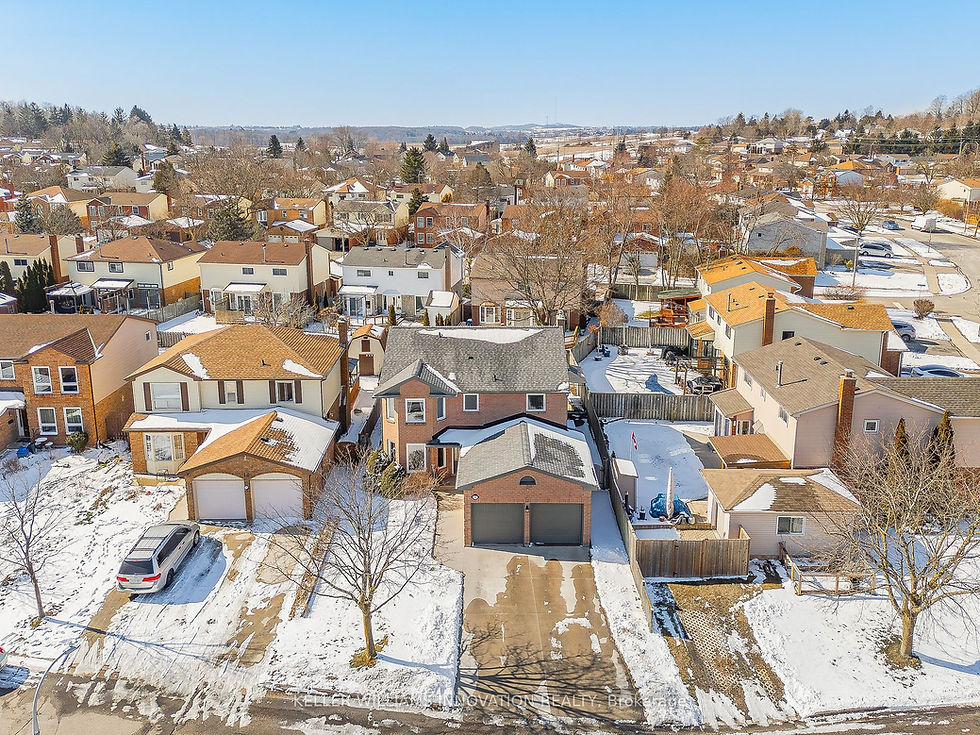The RRSP Home Buyers’ Plan Explained
- Team Pinto

- Apr 29, 2021
- 4 min read
Updated: May 11, 2021
An RRSP (Registered Retirement Savings Plan) is a great way to save for retirement because it allows you to defer taxes on both your contributions and any interest you earn. That means you can earn a lot of compound interest before paying taxes on your savings. Only the funds you withdraw from your RRSP in retirement will be taxed.
But did you know that you can use your RRSP to boost your first-time homebuyer’s down payment?
To make financial sense, the funds in your RRSP should generally stay there until you retire, as there are penalties for early withdrawals. The RRSP Home Buyers’ Plan (HBP), at least for first-time home buyers, is an exception to this rule. The HBP allows you to withdraw up to $35,000 from your RRSP for a down payment on a home, making home ownership more attainable for those who might have the credit scores and steady job needed to buy a home, but not the downpayment just yet.
There are a few things you should know about the RRSP Home Buyers’ Plan, aside from the fact that it’s a tax-free loan to yourself. Here are some facts to consider about the RRSP HBP before you inquire about making a withdrawal.
How Much Can You Withdraw?
You can withdraw up to $35,000 from your RRSP under the Home Buyers’ Plan. This was raised from $25,000 in March of 2019. You can withdraw up to $70,000 if you’re buying your first home with your partner (or another first-time home buyer).
Your withdrawal can come from any number of RRSPs in your name, but the total amount you can take out cannot exceed the maximum amount.
The 90-Day Rule Matters
Any money you take out of your RRSP must have been there for at least 90 days. This is true if you take money out of your RRSP for any reason (for example, the Lifelong Learning Plan), not just for a down payment. It’s possible that the money won’t be tax-deductible for that year if it doesn’t sit in your RRSP for at least 90 days before being withdrawn.
If you expect to receive a large sum of money soon, or if someone will gift you a portion of your down payment, don’t just put it in your RRSP to get a tax break. If you need to withdraw money for the HBP within the next 90 days, your deposit may be put on hold. This means you won’t be able to access it until the 90-day period has passed. If you’re anticipating something similar, it’s a good idea to consult a financial advisor or mortgage broker.
Withdrawal Timing
You can apply for a withdrawal from your RRSP before buying a home if you meet a few criteria. When you make the withdrawal, you must already have a written agreement to buy. You must also be a Canadian resident at the time the withdrawal is made and until the home is purchased.
You can also withdraw funds after you purchase a home, but there is a time limit. The withdrawal must be made within 30 days of taking possession of the property. If you try to withdraw more than 30 days after receiving title to the house, your withdrawal will not be eligible for the HBP, and you will be taxed on the amount you withdraw.
Withdrawals From Multiple RRSP Accounts
You can withdraw money from multiple RRSPs as long as you are the plan’s owner. The total amount withdrawn from all accounts must not exceed the withdrawal limit. Withdrawals from locked-in RRSPs and group RRSPs are generally not possible.
To make a withdrawal, you must fill out a T1036 form for each RRSP from which you want to borrow money and submit it to the RRSP’s issuer.
With one exception, the entire HBP amount must be withdrawn and claimed on your taxes in the same calendar year. The CRA (Canada Revenue Agency) considers the second withdrawal to have been made in the same calendar year as the first if it is made in January of the following year.
About Repayments to Your RRSP
Your first repayment isn’t due for another two years after you make your withdrawal, and you have 15 years to repay the entire amount. You can begin making payments at any time, and you can repay the entire amount without penalty if you pay it off early, but these are the minimum repayment requirements. Your remaining balance for future years will be reduced if you pay more than the minimum.
The amount you must repay each year is one-fifth of the total amount borrowed from your RRSP. You must include the amount you did not pay as RRSP income on your taxes if you do not make your minimum repayment for the year.
Final Thoughts
It can be difficult for a first-time home buyer to come up with enough money for a down payment. The Home Buyer’s Plan, on the other hand, is a great way to unlock the potential of your savings if you’ve been diligent in your RRSP contributions. You must, however, understand the program and its overall financial implications, giving the decision serious thought before you make any moves.


